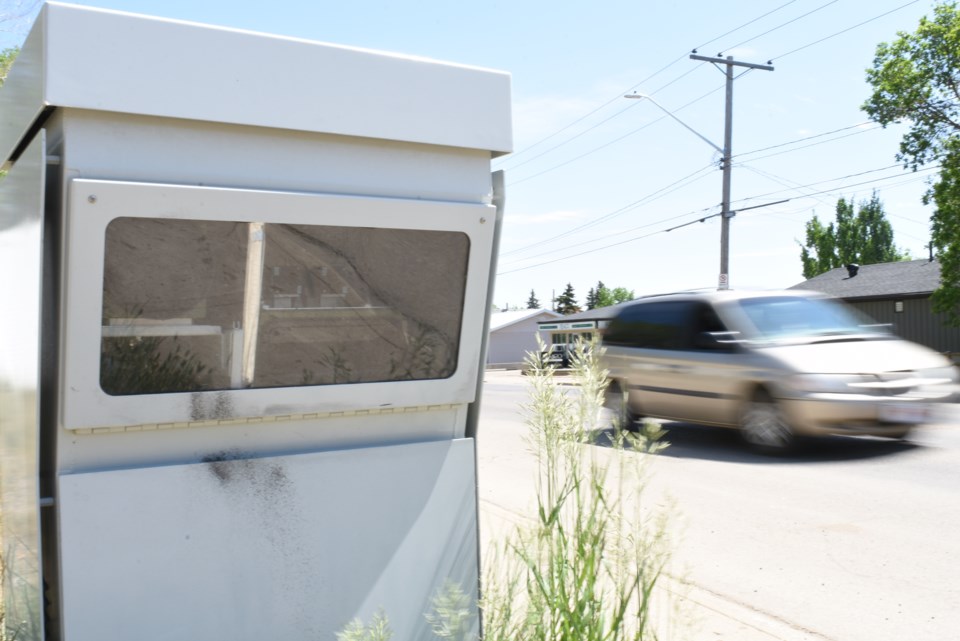City council will renew an agreement with the province for photo radar even though the municipality is now receiving 10 per cent of revenues compared to 75 per cent three years ago.
Council unanimously approved the one-year agreement renewal during its March 22 regular meeting, after Saskatchewan Government Insurance (SGI) recently offered to renew its automated speed enforcement systems agreement.
Through SGI, the provincial government introduced photo radar in 2015 in Moose Jaw, Regina and Saskatoon on a trial basis, a council report explained. The program proved to be successful in reducing high-speed motorists and a corresponding reduction in severity in accidents.
There are four photo radar cameras in Moose Jaw: two on Highway 1 and one each near William Grayson and Palliser Heights schools.
Background
The current agreement — which was signed on July 16, 2019 and amended on May 21, 2020 — will expire on March 31, 2021. SGI is not proposing any amendments to the current agreement but is simply asking to renew the document until March 31, 2022.
The provincial government initially received 25 per cent of ticket revenues to cover its costs when the program began, the council report explained. The remainder flowed to the municipality — responsible for camera operations — and used for traffic safety initiatives.
The province made the photo radar program permanent in 2018 but indicated that it would change the distribution model so that some revenues from the three original cities would be shared with other Saskatchewan municipalities. In 2019 the province implemented a new distribution model:
- 25 per cent to the province’s operating budget
- 55 per cent to cover the province’s expenses
- 10 per cent to the municipality
- 10 per cent to the provincial traffic safety pool
If the municipality incurs a surplus, there is the potential for a split in additional funds, the council report said. Moose Jaw could also be asked to pay extra costs if there is insufficient revenue to cover expenses from the 10 per cent revenue assigned to the city. However, no funding from the municipality is required outside of the 10 per cent of revenue earned through the program.
In an email to the Moose Jaw Express, SGI clarified that it would bear the full cost of the program — and not the city — if there are expense overruns.
Financial details
According to city hall, city administration expected to receive $637,000 in revenue from the photo radar cameras last year; it actually received $374,886.
Meanwhile, city administration has budgeted to receive $243,370 this year from the automated speed enforcement system.
Council discussion
“We did not agree with the distribution changes that were made. We lobbied and were unsuccessful,” city manager Jim Puffalt told council. “So, this is as good as it gets.”
Coun. Crystal Froese also disagreed with how the funds were now being distributed.
“It is a big bee in my bonnet as well. Nevertheless, it is good to see some money as opposed to none at all,” she added.
The cameras have had a positive effect on the community’s safety since they were introduced, said Mayor Fraser Tolmie. While Moose Jaw is not receiving the financial benefits it once did from the photo radar cameras, council should not lose sight of how much safer the city’s roads are.
The next regular council meeting is Monday, April 12.




